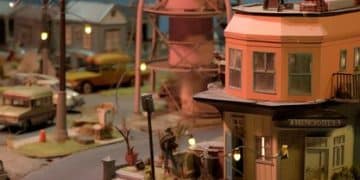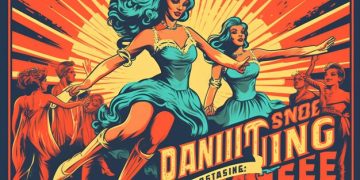Practical Stunts: How Classics Did Thrills Without CGI
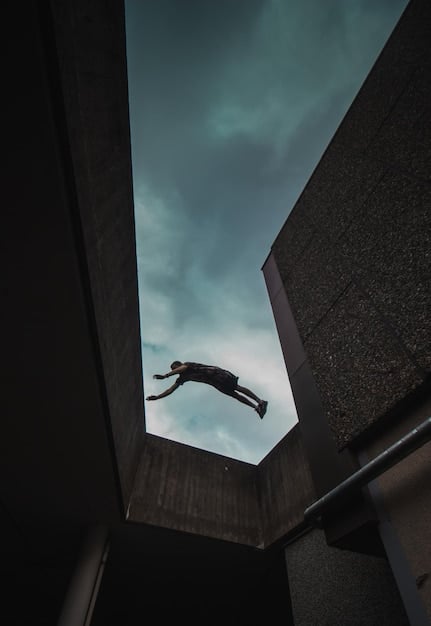
Practical stunts in classic films achieved thrilling action sequences without CGI, relying on ingenuity to create realistic and captivating movie magic that still impresses audiences today.
Before the advent of CGI, filmmakers depended on ingenuity and creativity to produce thrilling cinematic moments. This article explores the art of the practical stunt: how ‘forgotten classics’ achieved thrills without CGI, highlighting the skills, planning, and sheer bravery involved.
The Golden Age of Practical Stunts
The early days of cinema demanded that action be captured live, with real people performing incredible feats. This era—often referred to as the golden age of practical stunts—showcased the incredible talent of stunt performers who were integral to the success of many films.
Practical stunts were more than just thrilling spectacles; they were a cornerstone of storytelling that required meticulous planning, innovative techniques, and immense physical skill. During this golden age, performers like Yakima Canutt and Buster Keaton revolutionized stunt work, setting standards that would influence generations.
Yakima Canutt: The Pioneer
Yakima Canutt wasn’t merely a stuntman; he was an innovator and a legend. His work spanned several decades, contributing to iconic westerns and adventure films with his groundbreaking techniques.
- Stagecoach Falls: Canutt perfected the art of the wagon fall in John Ford’s “Stagecoach,” creating a visually stunning and realistic spectacle.
- Safety Innovations: Despite the inherent risks, Canutt focused on minimizing danger through choreography and equipment modifications.
- Mentorship: He trained many stunt performers, passing on his expertise and solidifying his legacy in the industry.
Canutt’s contributions extended beyond performing stunts; he also designed and coordinated sequences, ensuring they were both safe and visually impactful.
The Ingenuity Behind the Camera
Without the luxury of digital effects, filmmakers had to be exceptionally creative. They employed various techniques to enhance stunts and create illusions that left audiences breathless. It required a blend of engineering, psychology, and pure showmanship.
Camera angles, set design, and editing played key roles in making stunts appear more dangerous and impactful. Directors and cinematographers collaborated closely to ensure that each stunt delivered maximum excitement.
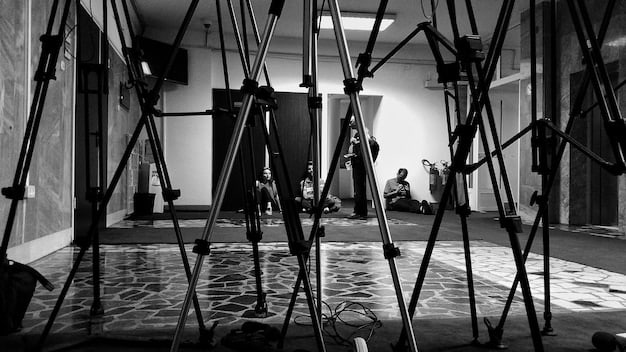
Forced Perspective
This technique involved manipulating the scale of objects and actors to create the illusion of greater distances or heights. It was a simple yet effective way to amplify the perceived danger of a stunt.
- Miniature Sets: Using smaller-scale models allowed filmmakers to create massive backdrops without the expense and risk of building full-sized sets.
- Strategic Placement: Careful positioning of actors and objects created the illusion of depth, making jumps and falls appear more dramatic.
- Lighting Effects: Controlled lighting enhanced the illusion, highlighting specific areas and casting shadows to deepen the sense of distance.
Forced perspective was a staple in many classic films, demonstrating how clever visual tricks could significantly amplify the impact of practical stunts.
Notable Films Famous for Practical Stunts
Several classic movies stand out for their exceptional use of practical stunts. These films not only provided thrilling entertainment but also highlighted the artistry and dedication of stunt performers and filmmakers alike.
These films are revered for their innovative approach to action sequences, setting a benchmark for what could be achieved without relying on CGI. From swashbuckling adventures to breathtaking westerns, these movies demonstrated the power of practical effects and stunt work.
“Raiders of the Lost Ark” (1981)
Known for its daring stunts and non-stop action, “Raiders of the Lost Ark” is a masterclass in practical filmmaking. The truck chase scene, in particular, remains one of the most iconic action sequences in cinema history.
- Truck Chase: Harrison Ford’s daring stunts atop a speeding truck were all performed practically, with minimal reliance on post-production effects.
- Fight Choreography: The intricate fight choreography was designed to look chaotic and real, adding to the sense of danger and excitement.
- Practical Explosions: Real explosions and pyrotechnics were used throughout the film, creating visually stunning and visceral moments.
“Raiders of the Lost Ark” set a new standard for action films, proving that practical stunts could be just as—if not more—thrilling than their digital counterparts.
The Risks and Rewards of Practical Stunts
Performing practical stunts came with significant risks. Stunt performers faced potential injuries with every sequence, making meticulous planning and safety measures crucial. Despite the dangers, the rewards were immense—both in terms of audience impact and professional satisfaction.
The physical and psychological demands on stunt performers were considerable. They needed to be in peak physical condition, possess a high level of skill, and maintain a calm demeanor under pressure. The adrenaline rush and the sense of accomplishment were often cited as significant motivators.
Safety Protocols
Rigorous safety protocols were essential to minimizing injuries on set. Stunt coordinators worked closely with directors and performers to ensure that every stunt was as safe as possible.
- Choreography Precision: Stunts were meticulously planned and rehearsed to ensure that every movement was as precise and controlled as possible.
- Protective Gear: While often hidden from the camera, performers wore protective gear to cushion impacts and reduce the risk of serious injury.
- Emergency Response Teams: Medical personnel were always on standby to provide immediate assistance in case of accidents, ensuring that any injuries were promptly addressed.
These protocols were vital in protecting the well-being of stunt performers and allowing them to push the boundaries of what was possible on film.
The Decline and Resurgence of Practical Stunts
With the rise of CGI in the late 20th century, practical stunts began to decline. Digital effects offered filmmakers greater control and flexibility, making it easier to create seemingly impossible action sequences. However, audiences soon began to crave the authenticity and visceral impact of practical stunts once again.
The over-reliance on CGI often resulted in action sequences that lacked weight and believability. Many filmmakers and viewers alike started to recognize the value of real-world stunts in creating a more immersive and engaging cinematic experience.
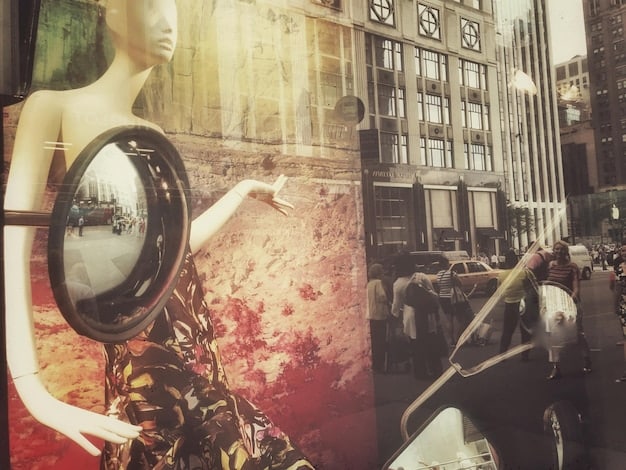
Modern Appreciation
There is now a growing appreciation for practical effects and stunts. Films that prioritize real-world action over digital effects are often praised for their authenticity and intensity.
- “Mission: Impossible” Series: The “Mission: Impossible” franchise, starring Tom Cruise, has become known for its commitment to practical stunts, with Cruise himself performing many of the most daring sequences.
- Indie Films: Many independent filmmakers continue to use practical stunts to create gritty and realistic action sequences on a limited budget.
- Nostalgia Factor: The nostalgia for classic filmmaking techniques has also contributed to the resurgence of practical stunts, as audiences seek out films that capture the spirit of the golden age of cinema.
By blending practical effects with selective CGI enhancements, filmmakers are creating action sequences that are both visually spectacular and grounded in reality.
The Future of Stunt Work
The future of stunt work likely involves a blend of practical and digital techniques. As technology continues to evolve, stunt performers and filmmakers will have access to even more tools to create incredible cinematic moments. However, the fundamental skills and artistry of stunt work will remain essential.
Virtual reality (VR) and augmented reality (AR) could also play a significant role in stunt training and pre-visualization, allowing performers to practice complex sequences in a safe and controlled environment. The emphasis is always on combining the best of both worlds, ensuring safety while delivering breathtaking entertainment.
Ethical Considerations
As stunt technology advances, ethical considerations become increasingly important. Ensuring the safety and well-being of stunt performers must remain a top priority, regardless of the creative possibilities afforded by new technologies, and technology should serve to minimize risks and enhance performance, not replace human skill and judgment.
| Key Aspect | Brief Description |
|---|---|
| 🎬 Classic Stunts | Achieved thrills using practical effects without CGI. |
| 🪢 Ingenuity | Filmmakers used clever techniques like forced perspective. |
| 🤕 Risks | Stunt performers faced real dangers, requiring safety measures. |
| ✨ Resurgence | Appreciation for practical stunts is growing in modern films. |
FAQ
▼
A practical stunt involves physical actions performed by stunt professionals on set without relying on digital enhancements. These can range from simple falls to complex action sequences requiring meticulous planning and execution.
▼
CGI offered filmmakers more control and flexibility, allowing virtually impossible actions to be depicted. This reduced the need for physical stunts, as digital effects could create visually spectacular scenes more easily and often at a lower cost.
▼
Safety measures include meticulous choreography, protective gear like pads even if hidden under clothing, and on-set medical teams. Rehearsals are crucial to ensure precise movements, minimizing risks of injury during the actual shoot.
▼
“Raiders of the Lost Ark” is highly regarded for its practical stunts. The action sequences are performed with minimal CGI, featuring real explosions and intricate fight choreography, making it realistic and exciting.
▼
Many viewers feel CGI-heavy films lack visceral impact. The comeback is driven by a desire for authenticity and realism, providing audiences with a more immersive cinematic experience due to the tangibility real-world stunts provide.
Conclusion
As audiences continue to seek authenticity in cinematic experiences, it’s clear that practical stunts will always have a place in filmmaking. By celebrating the dedication and artistry of stunt performers, we can ensure that their contributions continue to inspire and thrill audiences for generations to come.
